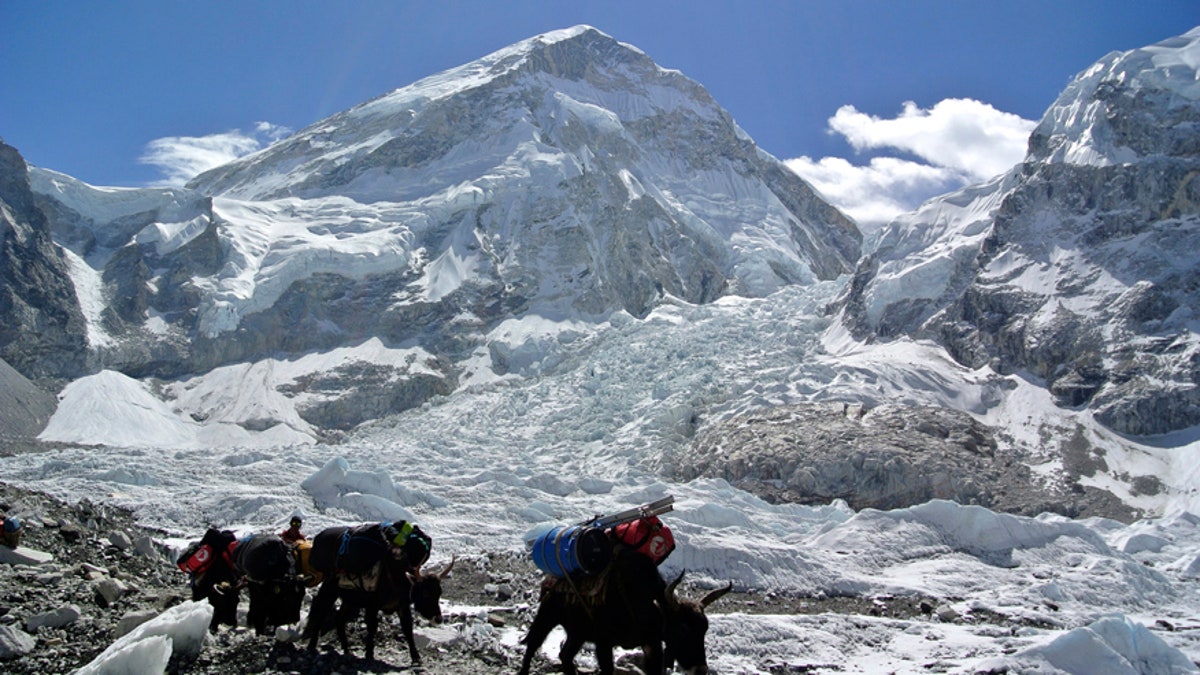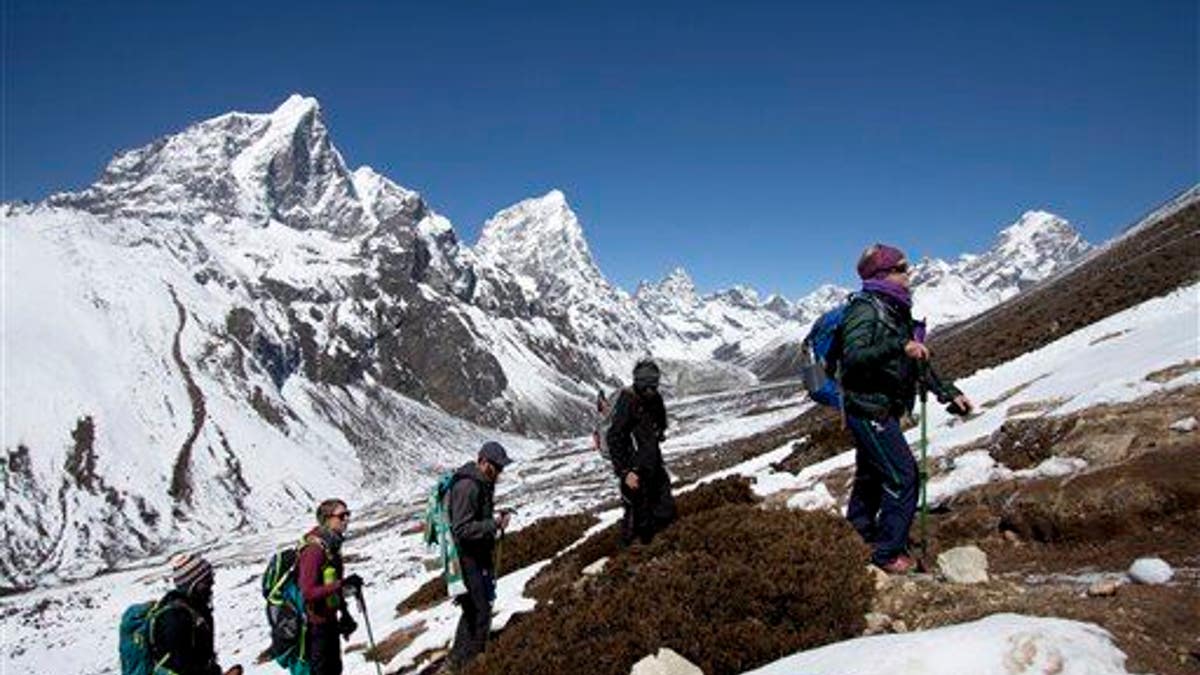Daredevils may run into a hiccup if they’re looking to climb the world’s highest mountain.
Mount Everest, located in the Himalayas, is exploring restricting access to the summit.
Nepal has drafted a law that would require climbers to have prior experience with hiking one of the Himalayan mountains, Reuters reported.
ANCIENT TEMPLE UNDERGOES RENOVATIONS TO PREVENT EARTHQUAKE DAMAGE
The proposed law aims at improving safety while also reducing overcrowding on the summit.
Those wanting to climb Mount Everest would have to provide evidence of having climbed at least one 7,000-meter (22,965 ft.) mountain in Nepal.
In 2023, 12 climbers were reported dead while five went missing following 478 hiking permits issued by Nepal, according to Reuters.
An area above 26,247 ft. on the mountain is referred to as the “death zone.”
Over 330 climbers have died while hiking Mount Everest since modern records began in 1921.
That’s where the air is too thin to support human life without supplemental oxygen.
For more Lifestyle articles, visit foxnews.com/lifestyle
Over 330 climbers have died while hiking Mount Everest since modern recordkeeping began in 1921, while 200 bodies remain frozen on the slopes, according to travel company Mount Everest Official.
Expedition operators believe Nepal should not limit the permit to just those in the Himalayan Mountain range but should allow any 7,000-meter peak as many mountains are not popular.

Austria-based expedition organizer, Lukas Furtenbach of Furtenbach Adventures, told Reuters the Himalayan experience requirement “doesn’t make sense.”
“I would also add mountains that are close to 7,000 meters to that list and that are widely used as preparation, like Ama Dablam, Aconcagua, Denali and others,” said Furtenbach.
Garrett Madison of Madison Mountaineering shared a similar sentiment, telling Reuters a 6,500-meter peak anywhere in the world would be a better idea.
“It’s too difficult to find a reasonable 7,000-meter-plus peak in Nepal,” the U.S.-based expedition organizer echoed.

Tashi Lhakpa Sherpa of the 14 Peaks Expedition in Nepal told Reuters that “only a few of the 7,000-meter mountains attract climbers.”
About 700 and 1,000 climbers attempt the summit each year, with success rates ranging between 60% and 70%, according to Climbing Kilimanjaro.
Reuters contributed reporting to this article.
Read the full article here







Leave a Reply